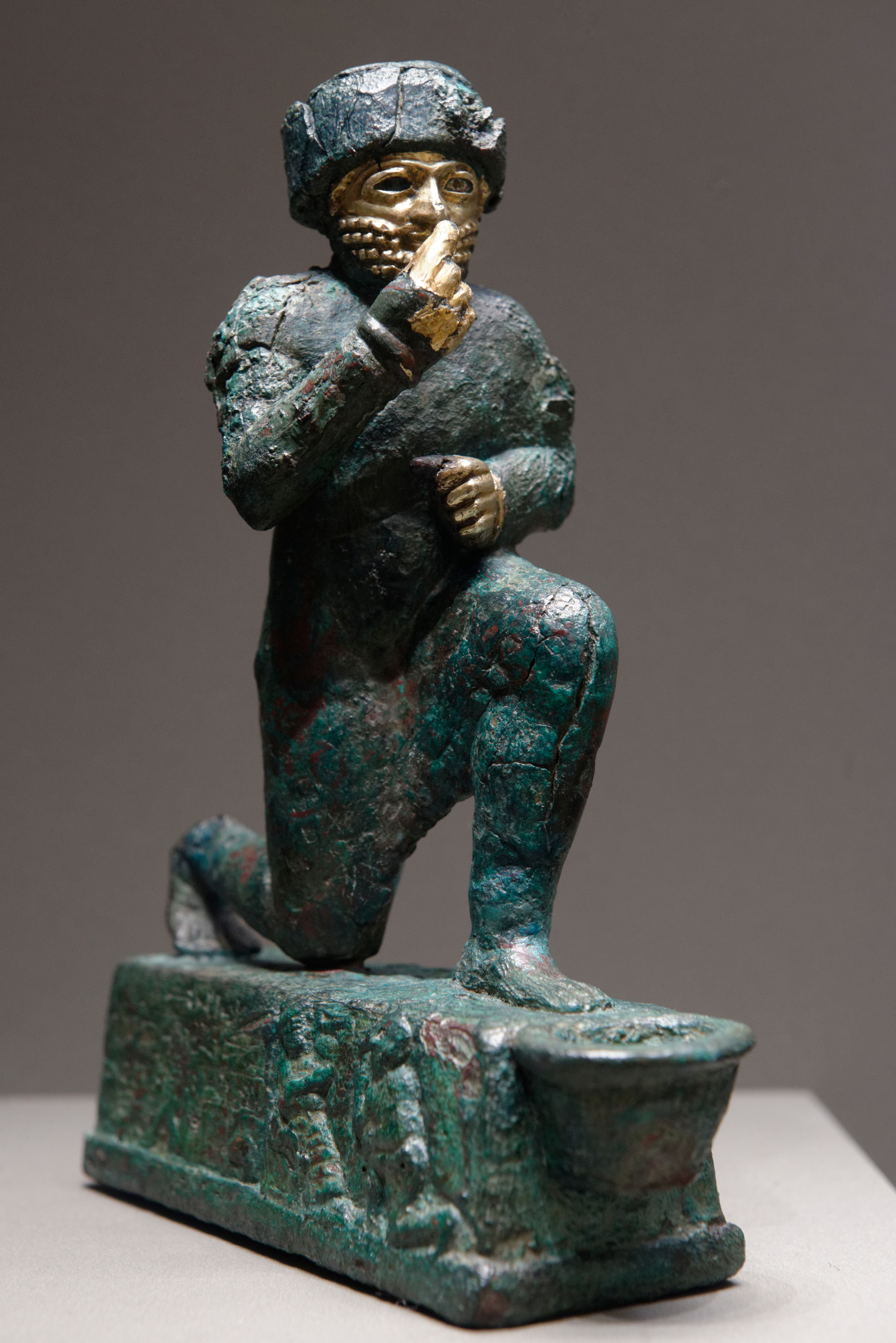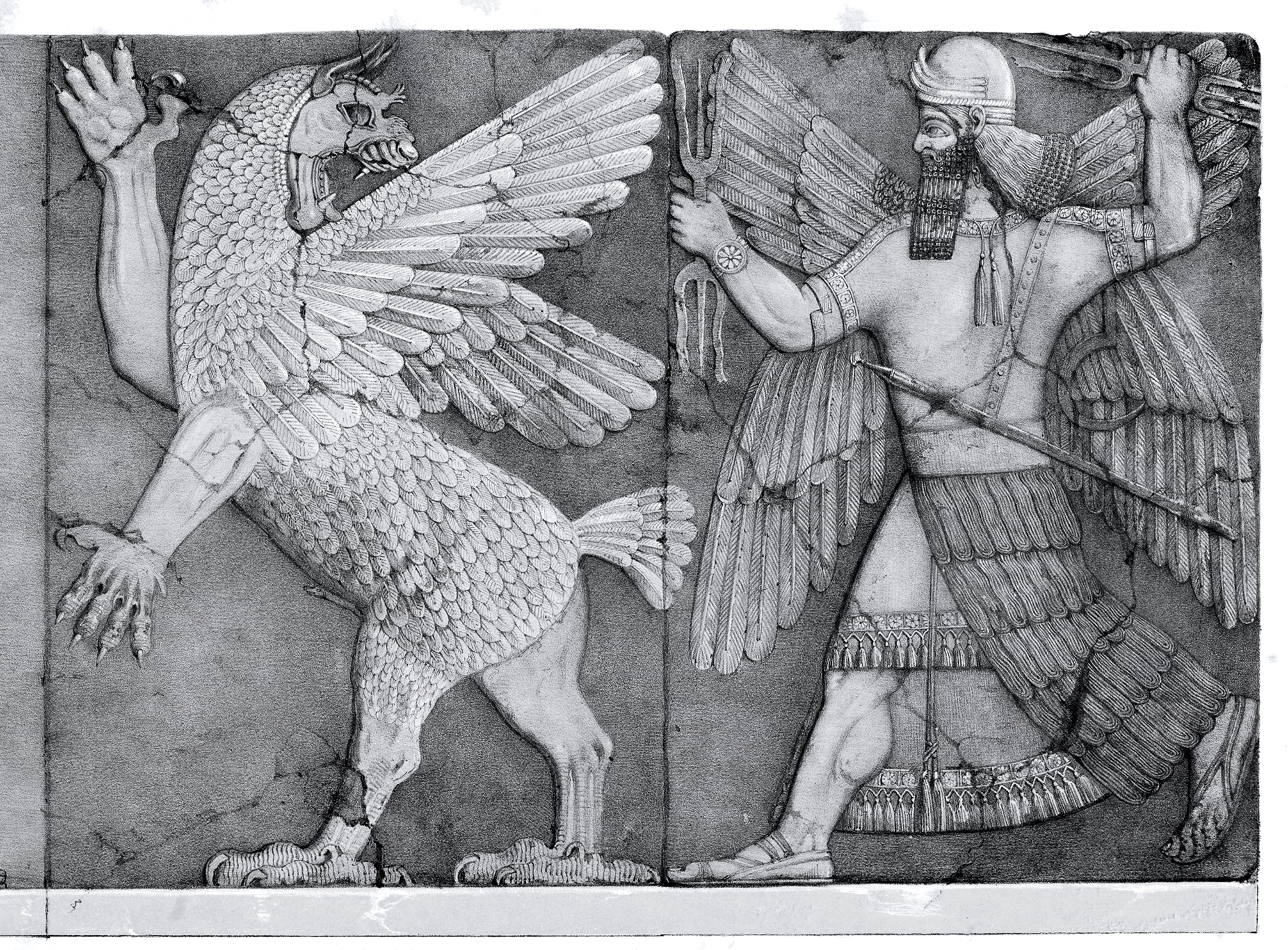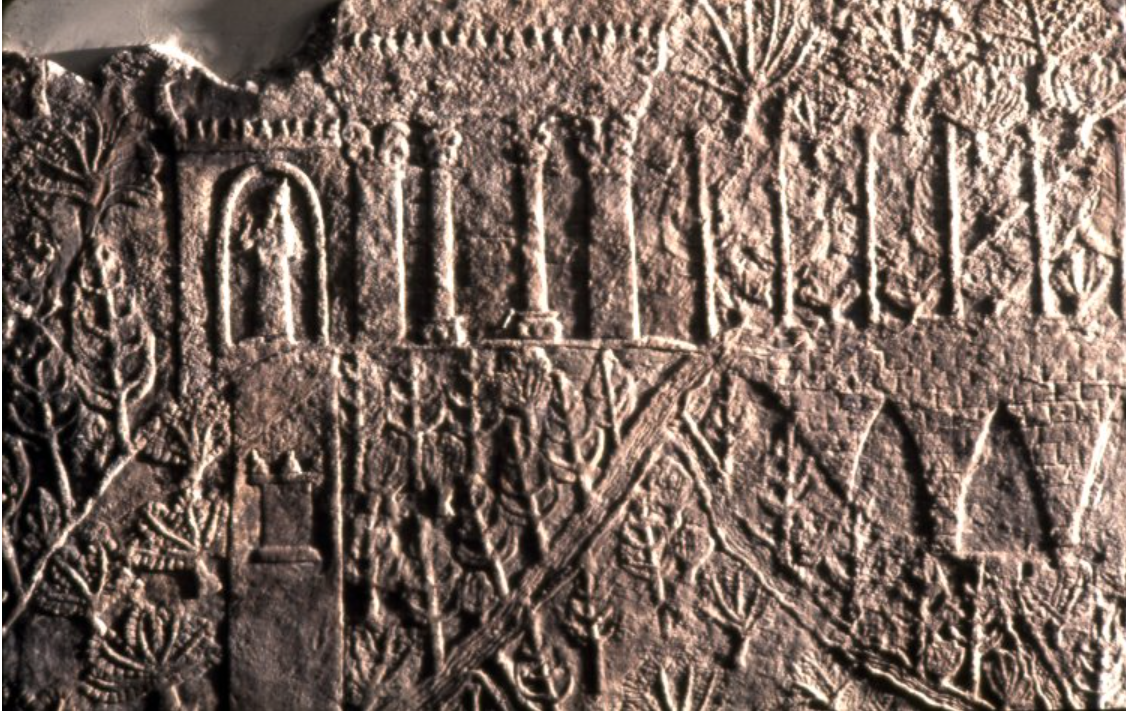|
Arioch
Arioch () appears in Genesis 14 as the name of the King of Ellassr () who participated in the Battle of Siddim. Led by Chedorlaomer, the four kings Amraphel, Arioch, Chedorlaomer, and Tidal engaged in a punitive expedition against five kings of Canaan who rebelled against Chedorlaomer, Bera of Sodom, Birsha of Gomorrah, Shinab of Admah, Shemeber of Zeboim, and Zoar of Bela. The same story is also mentioned in the Book of Jubilees, where Arioch is called "king of Sellasar". According to Genesis Apocryphon (col. 21), Arioh was king of Cappadocia. Arioch and Ellasar Some historians have placed the area where Arioch ruled in Anatolia, but theories as to its specific locations differ, with some claiming it was in Pontus while others cite Cappadocia and Antioch. There are also sources which associated Ellasar with the kingdom of Larsa and suggested that Arioch could be one of its kings called ''Eri-Aku'', an epithet of either Warad-Sin or Rim-Sîn I, since both are descr ... [...More Info...] [...Related Items...] OR: [Wikipedia] [Google] [Baidu] |
Battle Of Siddim
The Battle of the Vale of Siddim, also often called the War of Nine Kings or the Slaughter of Chedorlaomer, is an event in the Hebrew Bible book of that occurs in the days of Abram and Lot. The Vale of Siddim was the battleground for the cities of the Jordan River plain revolting against Mesopotamian rule. Whether this event occurred in history has been disputed by scholars. According to Ronald Hendel, "The current consensus is that there is little or no historical memory of pre-Israelite events in Genesis." Background The Book of Genesis explains that during the days of Lot, the vale of Siddim was a river valley where the Battle of Siddim occurred between four Mesopotamian armies and five cities of the Jordan plain. According to the biblical account, before the destruction of Sodom and Gomorrah, the Elamite King Chedorlaomer had subdued the tribes and cities surrounding the Jordan River plain. After 13 years, four kings of the cities of the Jordan plain revolted against Chedo ... [...More Info...] [...Related Items...] OR: [Wikipedia] [Google] [Baidu] |
Chedorlaomer
Chedorlaomer, also spelled Kedorlaomer (; ; ''Khodollogomor''), is a king of Elam mentioned in Genesis 14. Genesis portrays him as allied with three other kings, campaigning against five Canaanite city-states in response to an uprising in the days of Abraham. Etymology The name Chedorlaomer is associated with familiar Elamite components, such as ''kudur'' "servant", and Lagamal, an important goddess in the Elamite pantheon. ''The Jewish Encyclopedia'' states that, apart from the fact that Chedorlaomer can be identified as a proper Elamite compound, all else is matter of controversy and "the records give only the rather negative result that from Babylonian and Elamite documents nothing definite has been learned of Chedorlaomer". Background Chedorlaomer's reign After twelve years under Elamite rule, in the thirteenth year, the Cities of the Plain (Sodom, Gomorrah, Admah, Zeboim, and Zoara) rebelled against Chedorlaomer. To put down the rebellion, he called upon three othe ... [...More Info...] [...Related Items...] OR: [Wikipedia] [Google] [Baidu] |
Daniel 2
Daniel 2 (the second chapter of the Book of Daniel) tells how Daniel related and interpreted a dream of Nebuchadnezzar II, king of Babylon. In his night dream, the king saw a gigantic statue made of four metals, from its head of gold to its feet of mingled iron and clay; as he watched, a stone "not cut by human hands" destroyed the statue and became a mountain filling the whole world. Daniel explained to the king that the statue represented four successive kingdoms beginning with Babylon, while the stone and mountain signified a kingdom established by God which would never be destroyed nor given to another people. Nebuchadnezzar then acknowledges the supremacy of Daniel's God and raises him to high office in Babylon. Chapter 2 in its present form dates from no earlier than the first decades of the Seleucid Empire (312–63 BCE), but its roots may reach back to the Fall of Babylon (539 BCE) and the rise of the Persian Achaemenid Empire (c. 550–330 BCE). The overall theme of the ... [...More Info...] [...Related Items...] OR: [Wikipedia] [Google] [Baidu] |
Larsa
Larsa (, read ''Larsamki''), also referred to as Larancha/Laranchon (Gk. Λαραγχων) by Berossus, Berossos and connected with the biblical Arioch, Ellasar, was an important city-state of ancient Sumer, the center of the Cult (religious practice), cult of the sun god Utu with his temple E-babbar. It lies some southeast of Uruk in Iraq's Dhi Qar Governorate, near the east bank of the Shatt-en-Nil canal at the site of the modern settlement Tell as-Senkereh or Sankarah. Larsa is thought to be the source of a number of tablets involving Babylonian mathematics, including the Plimpton 322 tablet that contains patterns of Pythagorean triples. History Larsa is found (as UD.UNUG) on Proto-cuneiform lexical lists from the Uruk 4 period (late 4th millennium BC). A few Proto-cuneiform tablets were also found there. Three Neolithic clay tokens, from a slightly early period, were also found at Larsa. For most of its history Larsa was primarily a cult site for the god Utu. In the early p ... [...More Info...] [...Related Items...] OR: [Wikipedia] [Google] [Baidu] |
Assyrologist
Assyriology (from Ancient Greek, Greek , ''Assyriā''; and , ''-logy, -logia''), also known as Cuneiform studies or Ancient Near East studies, is the archaeological, anthropological, historical, and linguistic study of the cultures that used cuneiform writing. The field covers Pre Dynastic Mesopotamia, Sumer, the early Sumero-Akkadian city-states, the Akkadian Empire, Ebla, the Akkadian language, Akkadian and Imperial Aramaic speaking states of Assyria, Babylonia and the Sealand Dynasty, the Emigration, migrant foreign dynasties of southern Mesopotamia, including the Gutians, Amorites, Kassites, Arameans, Suteans and Ancient Chaldeans, Chaldeans. Assyriology can be included to cover Neolithic pre-Dynastic cultures dating to as far back as 8000 BC, to the Early Muslim conquests, Islamic Conquest of the 7th century AD, so the topic is significantly wider than that implied by the root "Assyria". The large number of cuneiform clay tablets preserved by these Sumero-Akkadian and Assyro- ... [...More Info...] [...Related Items...] OR: [Wikipedia] [Google] [Baidu] |
Ilānṣurā
Hasankeyf is a town located along the Tigris, in the Hasankeyf District, Batman Province, Turkey. It was declared a natural conservation area by Turkey in 1981. Despite local and international objections, the city and its archaeological sites have been flooded as part of the Ilısu Dam project. By 1 April 2020, water levels reached an elevation of 498.2m, covering the whole town. The town had a population of 4,329 in 2021. Toponymy Hasankeyf was an ancient settlement that has borne many names from a variety of cultures during its history. The variety of these names is compounded by the many ways that non-Latin alphabets such as Syriac and Arabic can be transliterated. Underlying these many names is much continuity between cultures in the basic identification of the site. The city of ''Ilānṣurā'' mentioned in the Akkadian and Northwest Semitic texts of the Mari Tablets (1800–1750 BC) may possibly be Hasankeyf, although other sites have also been proposed. By the Roman pe ... [...More Info...] [...Related Items...] OR: [Wikipedia] [Google] [Baidu] |
Mari Archives
Mari may refer to: Places *Mari, Paraíba, Brazil, a city *Mari, Cyprus, a village *Mari, Greece, a village, site of ancient town of Marius (Laconia), Marius *Mari, Iran (other), places in Iran *Mari, Punjab, a village and a union council in Pakistan *Mari, Syria, ancient Near Eastern city-state *Mari El, a Republics of Russia, republic in Russia **Mari Autonomous Soviet Socialist Republic (1936–1990), an administrative division of the Russian Soviet Federative Socialist Republic, Russian SFSR, Soviet Union, and a predecessor to the Mari El mentioned above. **Mari Autonomous Oblast (1920–1936), an administrative division of the Russian Soviet Federative Socialist Republic, Russian SFSR, Soviet Union, and a predecessor to the Mari Autonomous Soviet Socialist Republic, Mari ASSR. *Mari (crater), an impact crater on Mars Religion *Mari (goddess), Basque goddess *Māri or Mariamman, Indian goddess *Mari Native Religion, surviving pagan religion People and fictional char ... [...More Info...] [...Related Items...] OR: [Wikipedia] [Google] [Baidu] |
Mari, Syria
Mari (Cuneiform: , ''ma-riki'', modern Tell Hariri; ) was an ancient Semitic people, Semitic city-state in modern-day Syria. Its remains form a Tell (archaeology), tell 11 kilometers north-west of Abu Kamal on the Euphrates, Euphrates River western bank, some 120 kilometers southeast of Deir ez-Zor. It flourished as a trade center and hegemonic state between 2900 BC and 1759 BC. The city was built in the middle of the Euphrates trade routes between Sumer in the south and the Ebla, Eblaite kingdom and the Levant in the west. Mari was first abandoned in the middle of the 26th century BC but was rebuilt and became the capital of a hegemonic East Semitic languages, East Semitic state before 2500 BC. This second Mari engaged in a long war with its rival Ebla and is known for its strong affinity with Sumerian culture. It was destroyed in the 23rd century BC by the Akkadians, who allowed the city to be rebuilt and appointed a military governor (''Shakkanakku''). The ... [...More Info...] [...Related Items...] OR: [Wikipedia] [Google] [Baidu] |
Zimri-Lim
__NOTOC__ Zimri-Lim was in the Middle Bronze Age the king of Mari, Syria, Mari (c. 1767–1752 BCE; low chronology). Background Family Zimri-Lim (Akkadian language, Akkadian: ''Zi-im-ri Li-im'') was the son or grandson of king Yahdun-Lim of Mari. Exile The assassination of Yahdun-Lim by his own servants during a palace coup, forced Zimri-Lim to flee to the neighboring Great Kingdom of Yamhad (Halab, Aleppo). Mari was occupied by Shamshi-Adad I, the king of Ekallatum, who put his own son Yasmah-Adad on the throne. Ruler of Alalakh Zimri-Lim went into exile under Sumu-Epuh of Yamhad, and became the vassal ruler of Alalakh, unable to claim his rightful heritage to the throne of Mari. Reign Following the death of Shamshi-Adad I, Shamshi-Adad I of Assyria (c. 1776/1775 BC; middle chronology), Zimri-Lim was aided by Yarim-Lim I, the Great King of Yamhad, to oust Yasmah-Adad from the throne of Mari. There is an Akkadian literary text, written in the early years of his reign, entitl ... [...More Info...] [...Related Items...] OR: [Wikipedia] [Google] [Baidu] |
Stephanie Dalley
Stephanie Mary Dalley FSA (''née'' Page; March 1943) is a British Assyriologist and scholar of the Ancient Near East. Prior to her retirement, she was a teaching Fellow at the Oriental Institute, Oxford. She is known for her publications of cuneiform texts and her investigation into the Hanging Gardens of Babylon, and her proposal that it was situated in Nineveh, and constructed during Sennacherib's rule. Biography As a schoolgirl, Stephanie Page worked as a volunteer on archaeological excavations at Verulamium, Cirencester, and Bignor Villa. In 1962, she was invited by David Oates, a family friend, to an archaeological dig he was directing in Nimrud, northern Iraq. Here she was responsible for cleaning and conserving the discovered ivories. Between 1962 and 1966 she studied Assyriology at Newnham College, Cambridge, part of Cambridge University, and followed it up with a PhD from the School of Oriental and African Studies, London. In the years 1966–67, Page was aw ... [...More Info...] [...Related Items...] OR: [Wikipedia] [Google] [Baidu] |
Jean-Marie Durand
Jean-Marie Durand (; 13 November 1940) is a French Assyriologist. Career A student of the École Normale Supérieure (Lettres 1962), agrégé of grammar (1965), Doctor of History following a thesis dedicated to the documents of the rooms 134 and 160 of the Royal Palace of Mari (1975), Jean-Marie Durand was "directeur d'études" at the École pratique des hautes études (IVth section, Sumerian and Akkadian Antiques) (1987–1997) and professor at the Collège de France, holder of the chair of Assyriology (1999–2011) where he succeeded Paul Garelli. He largely devoted his research to the study of texts found in the ruins of the ancient city of Mari, and the publication of the Royal Archives of Mari. Durand was elected a member of the Académie des inscriptions et belles-lettres The () is a French learned society devoted to history, founded in February 1663 as one of the five academies of the . The academy's scope was the study of ancient inscriptions (epigraphy) and ... [...More Info...] [...Related Items...] OR: [Wikipedia] [Google] [Baidu] |
Kudur-Mabuk
Kudur-Mabuk (𒆪𒁺𒌨𒈠𒁍𒊌) was a ruler in the ancient Near East city-state of Larsa from 1770 BC to 1754 BC (short chronology) or 1830s BC (middle chronology). His sons Warad-Sin (1834-1823) and Rim-Sin I (1822-1763) were kings of Larsa. His daughter En-ane-du was high priestess of the moon god in Ur. Chronology of the Larsa Dynasty, E.M. Grice , C.E. Keiser, M. Jastrow, AMS Press, 1979, See also *Chronology of the ancient Near East The chronology of the ancient Near East is a framework of dates for various events, rulers and dynasties. Historical inscriptions and texts customarily record events in terms of a succession of officials or rulers: "in the year X of king Y". Com ... * Kings of Larsa * Emutbal:one of the lands he ruled References 18th-century BC Sumerian kings Kings of Larsa {{AncientNearEast-bio-stub ... [...More Info...] [...Related Items...] OR: [Wikipedia] [Google] [Baidu] |






